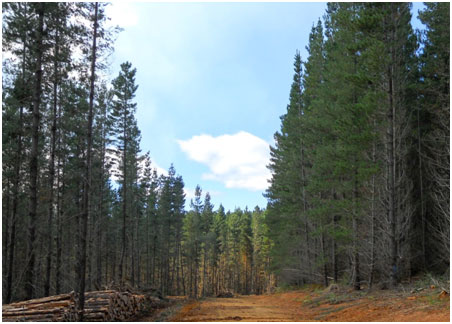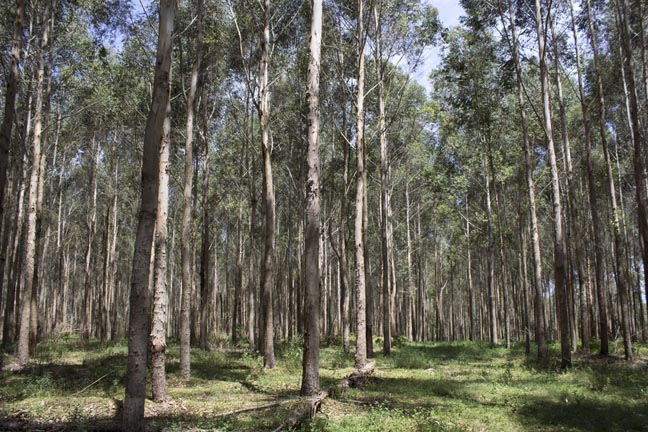Information for this profile is drawn from Australia's State of the Forests Report 2018 (SOFR). ABARES is in the process of updating indicators for SOFR with data up to or as at 2021. This forest profile will be updated with new data in early 2024.
Australia's commercial plantations covered a total of 1.95 million hectares in 2016 (or 2% of Australia's total forest area), including 1.02 million hectares of softwood species (mostly exotic pines), 0.92 million hectares of hardwood species (mostly eucalypts) and 0.01 million hectares of unknown or mixed species. Plantation area statistics are regularly updated by ABARES (see for example Australian plantation statistics update).
Australia's commercial plantations comprise both softwood species (predominantly radiata pine, Pinus radiata) and hardwood species (most commonly blue gum, Eucalyptus globulus). Their primary purpose is commercial wood production, and they produce most of the volume of logs harvested annually in Australia. Commercial plantations also provide a range of environmental services, such as salinity and erosion control, and support regional employment. Plantations provide habitat for some native flora and fauna species that generally do not inhabit cleared agricultural land, although the population densities of forest-dwelling species are usually lower in plantations than in native forests.


